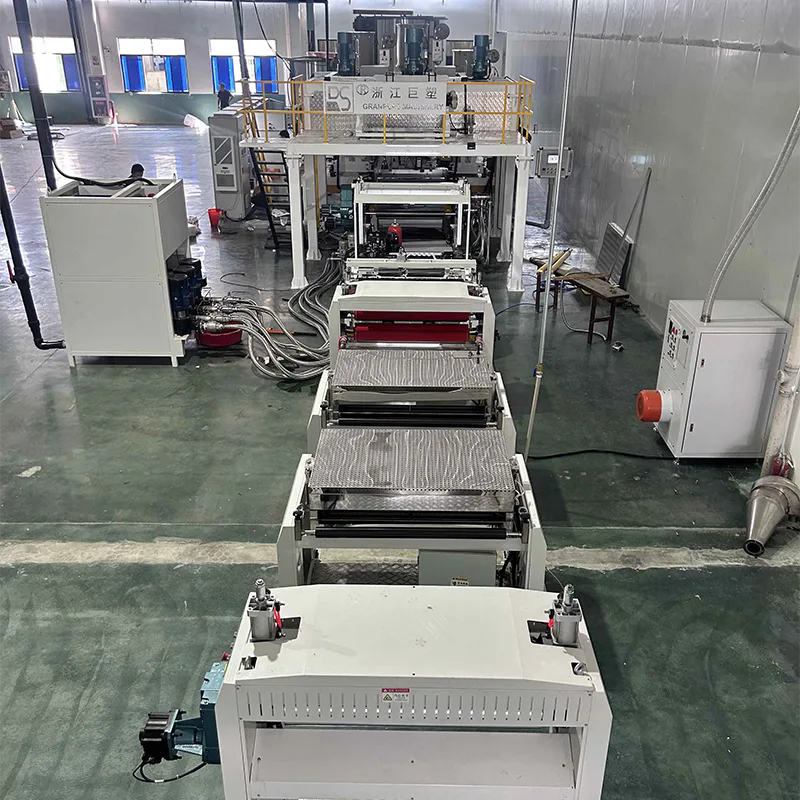What Are the Key Advantages of a PE Plate Production Line?
2025-11-06
A PE Plate Production Line is an essential asset for manufacturers looking to produce high-quality polyethylene (PE) plates for various applications. These production lines are designed to ensure efficiency, precision, and scalability in the manufacturing process, providing significant advantages in terms of product quality, production speed, and cost-effectiveness.
Key Features and Advantages:
-
High Efficiency: The PE Plate Production Line is engineered for continuous, high-speed production, ensuring that manufacturers can meet large-scale demands while maintaining optimal output.
-
Precision and Consistency: Advanced automation systems guarantee that each PE plate produced has uniform thickness and dimensions, reducing the need for manual intervention and improving product consistency.
-
Cost-Effective: By reducing waste and energy consumption, this production line lowers overall manufacturing costs. Its ability to produce large quantities of plates with minimal resource expenditure makes it a highly economical choice.
-
Flexible Production: The system can accommodate a wide range of PE plate thicknesses and sizes, providing manufacturers with the flexibility to produce various types of PE products for different applications.
-
Eco-Friendly: PE plates produced with this line are often made from recyclable materials, contributing to sustainable manufacturing practices.
Why Is the PE Plate Production Line Important in Modern Manufacturing?
The growing demand for PE plates across industries such as construction, automotive, and packaging has driven the development of specialized production lines. These lines are crucial for meeting industry standards while addressing specific material requirements.
-
Industry Demand: Industries like construction and packaging require PE plates for their durability, versatility, and cost-effectiveness. The PE Plate Production Line enables manufacturers to meet these demands with precision and speed.
-
Regulatory Compliance: With stricter environmental and quality regulations in place, having an efficient production line is vital for ensuring compliance with industry standards. The PE Plate Production Line is designed to meet these regulations and maintain high production quality.
How Does the PE Plate Production Line Work?
The production process of PE plates involves several critical stages that must be executed with precision to ensure the end product meets required standards. Understanding how the line functions is key to appreciating its efficiency and capabilities.
Production Stages:
-
Material Preparation: Polyethylene pellets are loaded into the extruder. These pellets are heated until they reach the desired melt point.
-
Extrusion: The molten polyethylene is then extruded through a mold, which shapes it into a continuous sheet. The extruder ensures the material is uniformly distributed.
-
Cooling: After extrusion, the sheet moves through a cooling system where it is rapidly cooled to solidify the material, ensuring the plate maintains its shape.
-
Cutting and Finishing: The solidified sheets are then cut into the desired dimensions and subjected to finishing processes such as trimming, polishing, and packaging.
Commonly Asked Questions About the PE Plate Production Line
What are the common issues that affect the production of PE plates?
Answer: Common issues that can affect PE plate production include material inconsistencies, such as uneven melting or poor extrusion flow. These problems can lead to variations in the final product's thickness or appearance. Regular maintenance and using high-quality raw materials are essential to avoiding these issues.
How can the PE Plate Production Line contribute to sustainable manufacturing practices?
Answer: The PE Plate Production Line supports sustainable practices by using recyclable polyethylene materials and reducing energy consumption during production. Additionally, the automation and precision of the system minimize waste, which helps lower the environmental impact of manufacturing.
Future Trends for PE Plate Production Lines
As technology continues to advance, PE Plate Production Lines are likely to evolve in several key areas to meet future industry demands.
-
Automation and AI Integration: The future of PE plate production will likely involve more sophisticated automation, driven by AI and machine learning. This will further improve production speed, quality control, and predictive maintenance.
-
Increased Customization: With rising demand for custom PE plates, production lines will become more flexible, enabling manufacturers to produce more tailored products based on specific customer needs.
-
Sustainability Focus: Environmental regulations will continue to drive the development of eco-friendly production lines. Future advancements will likely focus on reducing energy consumption and increasing the use of recycled materials.
Conclusion: PE Plate Production Line – A Key Asset for Future Manufacturing
The PE Plate Production Line offers a range of benefits that make it indispensable for modern manufacturers. From its high efficiency and cost-effectiveness to its ability to produce consistent, high-quality products, this production line is a crucial tool for industries looking to meet growing demand while adhering to environmental and quality standards.
For companies looking to invest in advanced manufacturing solutions, Granplas offers state-of-the-art PE Plate Production Lines that can be tailored to specific needs. If you're interested in optimizing your production process, please Contact Us to learn more about how Granplas can help improve your manufacturing efficiency.



